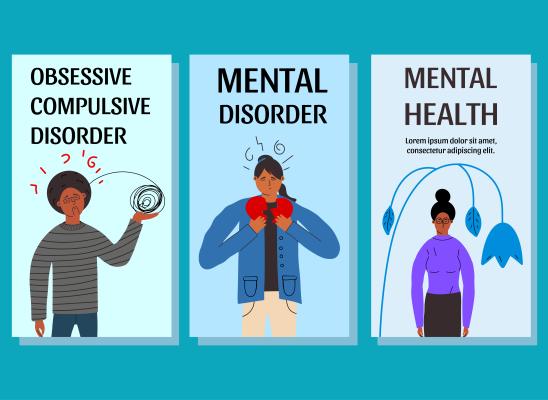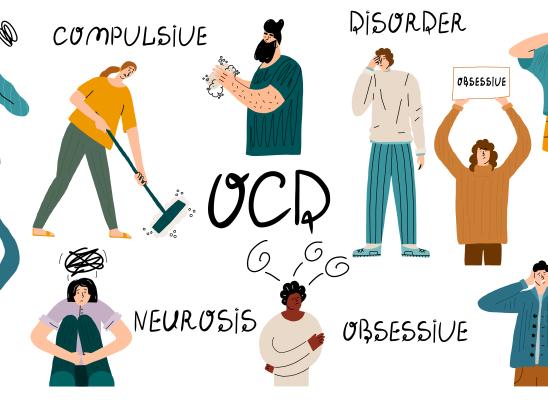
Online test
Find out the severity of your symptoms with this free online test
What is DBT?
Dialectical Behavior Therapy (DBT) is a type of cognitive-behavioral therapy (CBT) developed by Marsha Linehan in the late 1980s. Initially created to treat borderline personality disorder (BPD), DBT became popular because it helped individuals who experience intense emotional states—common in BPD—that often led to extreme behavioral responses like self-harm, to regulate themselves in a healthier way. Since its development, DBT has been applied to various mental health conditions, including depression, eating disorders, and anxiety-related disorders. The term "dialectical" refers to the balancing of acceptance and change. Essentially, DBT helps individuals accept themselves as they are while also encouraging change in maladaptive behaviors and thoughts.
In DBT, distress tolerance skills are essential tools for managing overwhelming emotions without resorting to harmful behaviors. These skills include techniques like self-soothing, where individuals use their senses to calm down (e.g., listening to calming music or holding something warm), and distraction, which involves temporarily shifting focus away from distressing emotions (e.g., engaging in a hobby or focusing on a task). Other distress tolerance skills involve radical acceptance, where individuals acknowledge reality without judgment, and pros and cons, which helps people weigh the benefits and drawbacks of their actions before making decisions.
DBT is structured around four core modules:
- Mindfulness: This module helps clients focus on the present moment and increase awareness of their thoughts, feelings, and actions. For example, a person might practice mindfulness by paying attention to their breath or noticing how their body feels in the moment, which can help them manage overwhelming emotions.
- Distress Tolerance: This module teaches individuals to cope with distressing situations without resorting to harmful behaviors. A common example would be using strategies like deep breathing or engaging in a self-soothing activity (like taking a warm bath) when someone feels the urge to act impulsively in response to anxiety.
- Emotional Regulation: This module focuses on identifying and managing intense emotions. For instance, if a person is experiencing anxiety, they might learn to recognize it early and use techniques like rethinking the situation to reduce the intensity of the emotion instead of getting stuck in it.
- Interpersonal Effectiveness: This teaches skills for building and maintaining healthy relationships. An example would be teaching someone to ask for what they need from others in a clear, non-confrontational way, such as calmly requesting support from a friend without pushing them away or becoming angry.
DBT and OCD: Current Literature and Best Practices
Obsessive-Compulsive Disorder (OCD) is a condition characterized by intrusive thoughts (obsessions) and repetitive behaviors (compulsions) that the individual feels compelled to perform to alleviate anxiety. Traditional treatment for OCD often involves Cognitive Behavioral Therapy (CBT), specifically a form called Exposure and Response Prevention (ERP). However, some individuals with OCD may not fully respond to ERP alone, which has led clinicians to explore alternative therapies like DBT.
In recent years, DBT has been explored as a potential treatment for OCD, particularly for individuals who struggle with emotional regulation, distress tolerance, or interpersonal issues. While DBT isn’t the first-line treatment for OCD, emerging evidence suggests it can be useful for addressing specific aspects of the disorder. For example, DBT’s focus on emotional regulation may be helpful for individuals whose OCD symptoms worsen during times of emotional distress, while distress tolerance skills can help manage the discomfort that often arises during exposure tasks in ERP.
Studies have documented the use of DBT for OCD. A 2015 study found that DBT was effective in treating comorbid OCD and emotional dysregulation. In this study, emotional dysregulation was found to worsen OCD symptoms, and DBT helped manage those underlying emotional issues. A more recent 2020 study suggested that combining DBT with ERP may benefit those with OCD who also have difficulty with emotional regulation or interpersonal relationships. While DBT helps manage distress, ERP directly targets the core OCD symptoms—obsessions and compulsions.
DBT as a Stand-Alone vs. Pairing with CBT for OCD
DBT as a stand-alone treatment for OCD is somewhat controversial. DBT focuses primarily on emotional regulation and distress tolerance, which makes it an excellent complementary therapy for individuals whose OCD is influenced by emotional dysregulation or interpersonal difficulties. However, it doesn't directly target the core symptoms of OCD—obsessions and compulsions—so it may not be sufficient on its own for treating these features.
DBT is frequently paired with CBT, particularly ERP, for treating OCD. This combined approach leverages the strengths of both therapies: ERP addresses the obsessions and compulsions central to OCD, while DBT helps the individual manage the emotional distress that can arise during the exposure tasks in ERP. A combined approach is especially helpful for individuals whose OCD is complicated by co-occurring issues, such as depression, anxiety, or difficulty managing emotions.
For example, a person with OCD might struggle with intense anxiety during ERP exposure tasks, leading them to abandon the task prematurely. DBT’s distress tolerance skills can help the individual sit with the discomfort of the exposure task, making it easier to follow through with ERP.
Who Might Be a Good Candidate for DBT for OCD?
A good candidate for DBT as a treatment for OCD might be someone who:
- Struggles with emotional regulation: For example, someone with OCD who also experiences high levels of anxiety or anger may find that DBT helps them manage their emotions more effectively, reducing the impact these emotions have on their OCD.
- Experiences significant interpersonal issues: A person who feels socially isolated or has trouble communicating their needs may benefit from DBT’s interpersonal effectiveness skills, which help individuals navigate relationships more effectively.
- Has co-occurring mental health conditions: For instance, if someone has both OCD and depression, DBT can be helpful in addressing the emotional dysregulation that may accompany these conditions, providing an extra layer of support alongside traditional OCD treatment.
- Has not fully benefited from ERP alone: For example, if someone struggles to manage the anxiety that arises during exposure tasks and this difficulty leads to avoidance, DBT’s distress tolerance skills may help them sit with and reduce the discomfort, allowing them to complete ERP tasks more effectively.
- Is motivated to develop skills: DBT requires active participation and skill-building. Someone who is motivated to learn mindfulness and distress tolerance techniques in addition to ERP may find this combined approach effective in managing their OCD.
What One Might Expect from DBT Sessions
DBT sessions typically follow a structured format. In individual therapy sessions, the therapist works with the client to address current issues related to OCD, emotional distress, and other relevant concerns. For example, if a client feels overwhelmed by obsessive thoughts and struggles to complete ERP tasks, the therapist might teach mindfulness techniques to help the individual stay grounded during exposure exercises.
Group therapy sessions are another key component of DBT, where clients learn and practice skills in a group setting. These sessions often focus on mindfulness, emotional regulation, and interpersonal effectiveness. Group therapy provides an opportunity for individuals to receive feedback and support from others dealing with similar challenges. For instance, a group member might share how they used a specific DBT technique to cope with anxiety, which can inspire others to try similar strategies.
Clients can expect a focus on skill-building and ongoing support. DBT isn't about immediately eradicating symptoms; it's about empowering the client to build a toolset for managing distress, improving emotional regulation, and addressing OCD-related behaviors. Over time, clients may feel more equipped to handle the challenges of OCD while reducing their reliance on compulsions.
Pros and Cons of DBT for OCD
Pros:
- Improved Emotional Regulation: DBT provides tools for managing intense emotions, which can be particularly beneficial for individuals whose OCD is triggered or worsened by emotional distress. For example, someone with OCD might feel more equipped to handle anxiety-provoking situations without resorting to compulsions.
- Distress Tolerance Skills: Many individuals with OCD struggle with the discomfort of uncertainty and anxiety. DBT’s distress tolerance skills, such as using self-soothing techniques or practicing radical acceptance, can help clients manage these feelings without resorting to compulsive behaviors.
- Focus on Acceptance and Change: DBT’s balance of acceptance and change helps individuals accept their current state while working towards improvement. For example, someone who feels overwhelmed by their obsessions might be encouraged to accept their feelings of discomfort without acting on them, while gradually working on reducing the intensity of the obsessions.
- Adaptability: DBT can be tailored to individuals with co-occurring mental health issues like depression or PTSD, making it a versatile treatment option for people who have complex needs.
- Supports Long-Term Maintenance: DBT focuses on teaching lasting skills that help maintain progress beyond therapy. For example, once a client learns how to regulate their emotions effectively, they are better able to manage their OCD symptoms over the long term.
Cons:
- Not a Direct Treatment for Obsessions and Compulsions: DBT isn’t specifically designed to address the core symptoms of OCD, such as obsessions and compulsions. This means it may not be sufficient on its own for treating these central features of OCD.
- May Not Address the Core of OCD: Without combining DBT with ERP, DBT may not directly reduce the severity of obsessive thoughts and compulsive behaviors.
- Requires High Client Commitment: Because DBT emphasizes skill-building and behavioral change, it requires significant effort from the client. Not everyone with OCD may be ready or able to engage in this level of work.
Conclusion
DBT can be a valuable tool in treating OCD, particularly for individuals dealing with emotional dysregulation, interpersonal difficulties, or co-occurring disorders. While not a first-line treatment for OCD, DBT can complement traditional treatments like ERP by improving emotional regulation and distress tolerance. When combined with ERP, DBT can offer a more holistic approach to treating OCD, especially for individuals who haven’t responded well to standard therapies.
If you or a loved one is struggling with OCD, consider how DBT could enhance your treatment. Whether you're dealing with emotional dysregulation, interpersonal difficulties, or need additional support alongside ERP, DBT offers powerful tools to help manage distress and foster lasting change. Visit StopOCD’s website to learn more about how combining DBT with proven treatments can help you or someone you care about regain control and improve quality of life. Reach out today and take the first step toward healing.
References
- Linehan, M. M. (2015). DBT skills training manual (2nd ed.). Guilford Press. https://www.guilford.com/books/DBT-Skills-Training-Manual/Marsha-Linehan/9781462516995
- Hoh, K., & Levin, M. (2020). A combined approach to treating OCD: DBT and ERP. Journal of Cognitive Psychotherapy, 34(2), 101-115.
https://doi.org/10.1007/s10032-019-00378- 1 - Nazari, M., & Sadeghi, M. (2015). Efficacy of dialectical behavior therapy on clinical signs and emotion regulation in patients with obsessive-compulsive disorder. Mediterranean Journal of Social Sciences, 6(5), 247-253. https://doi.org/10.5901/mjss.2015.v6n5s1p247
- Spurgeon, L., & Robinson, T. (2020). Dialectical behavior therapy for the management of emotion dysregulation in patients with obsessive-compulsive disorder. Frontiers in Psychology, 11, 3031. https://doi.org/10.3389/fpsyg.2020.603072
- Taylor, C. L., & Ross, M. A. (2020). Exploring the effectiveness of dialectical behavior therapy as an adjunct to multidisciplinary treatment for brain injuries and emotional regulation difficulties. Journal of Clinical Psychology, 76(2), 351-364. https://doi.org/10.1002/jclp.22923
Online test
Find out the severity of your symptoms with this free online test
Start your journey with StopOCD
Take control of your life and find freedom from OCD through professional therapy and evidence-based cognitive behavioral techniques.
Start Now



